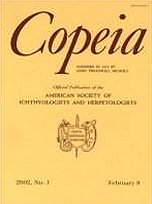The cause of size differences among developing fish is often not clear. We examined variability in egg size and in incubation time to determine whether either influenced hatching size or initial rates of growth in Japanese Medaka (Oryzias latipes). We also tested the prediction that larger females should produce heavier and/or more eggs. Our results indicated that larger females produce more, but not larger, eggs. Both egg volume and incubation time were positively, although weakly, correlated with the size of fry at hatching. Within-female variation accounted for substantially more variation in both egg size (69.9%) and hatching lengths of fry (79.3%) than did variation among females. Variation in egg volume, hatching size, and size at three-days posthatching (in the absence of feeding) decreased, as indicated by coefficients of variation for each (11.6, 4.8, 4.4). It is unknown whether slight differences in hatching size may contribute to subsequent variation in size when fry must compete for access to food.
How to translate text using browser tools
1 August 2000
Early Life-History Parameters of Japanese Medaka (Oryzias latipes)
K. L. Teather,
J. Boswell,
M. A. Gray
ACCESS THE FULL ARTICLE





